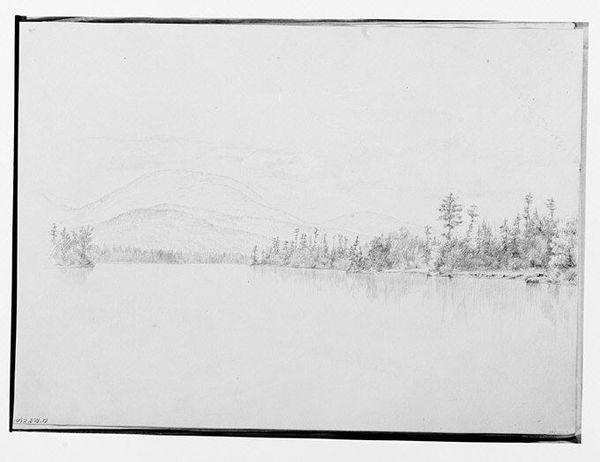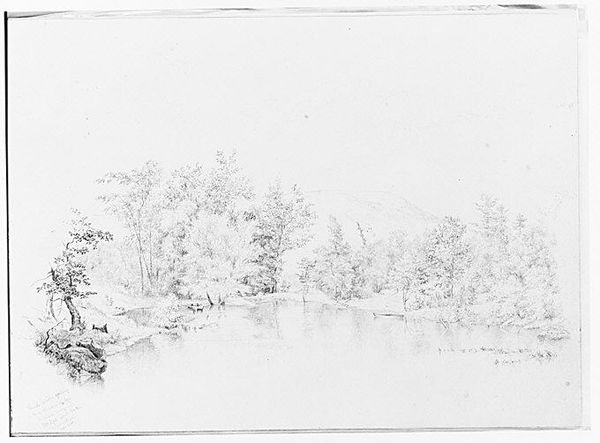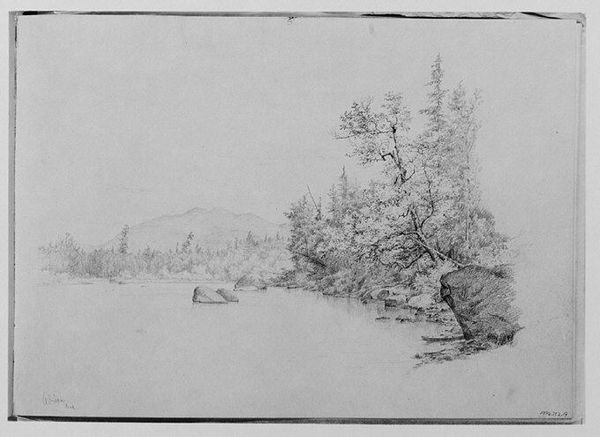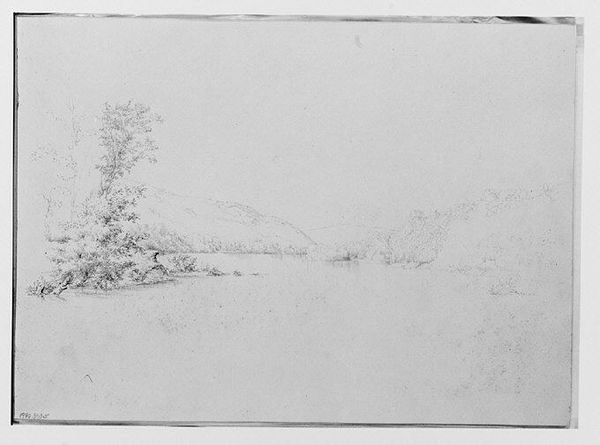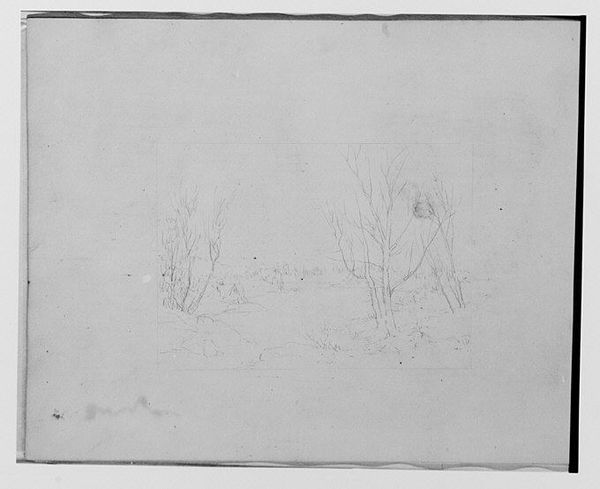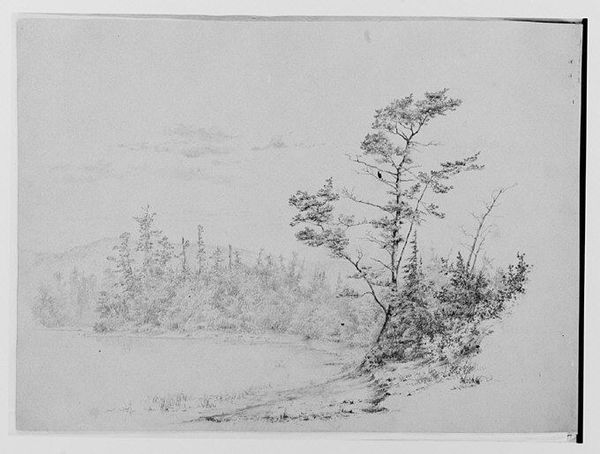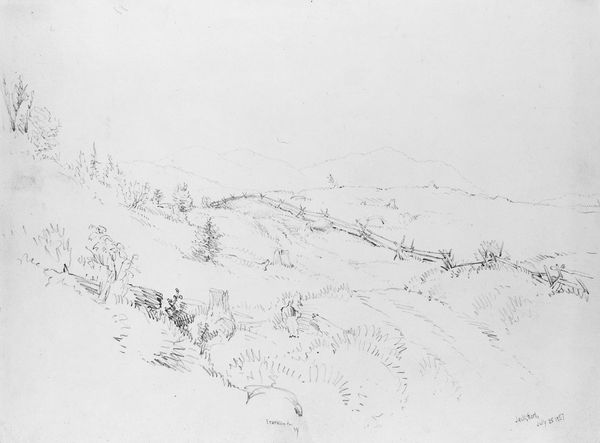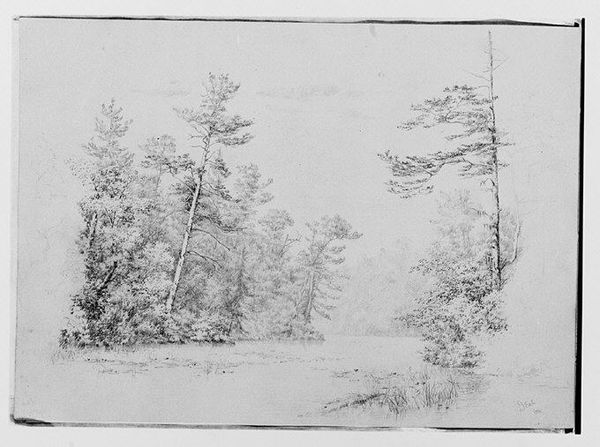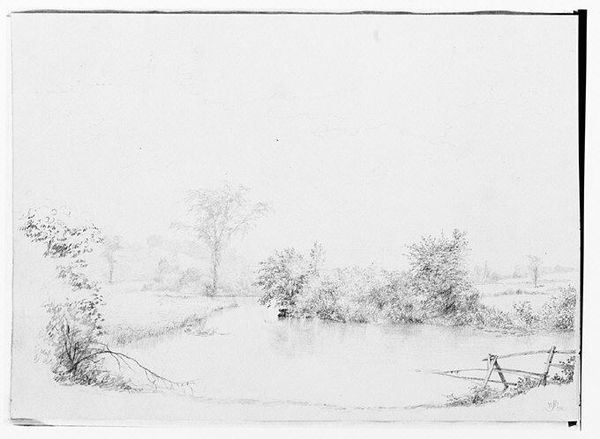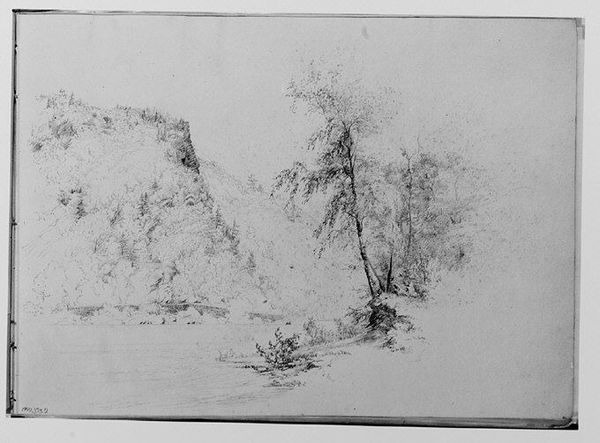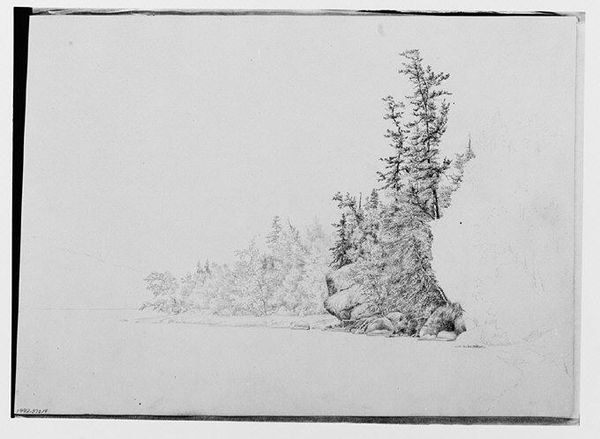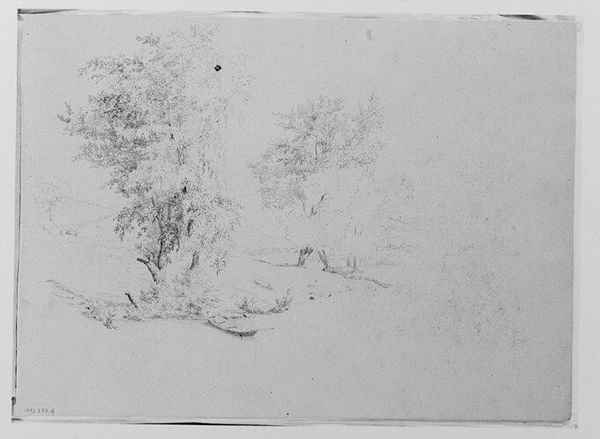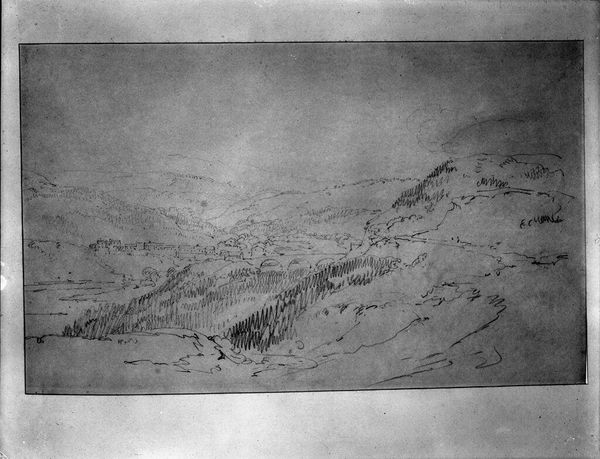
Dimensions: 9 3/4 x 13 7/8 in. (24.8 x 35.2 cm)
Copyright: Public Domain
Thomas Hewes Hinckley sketched "Catskill" in 1864, capturing a landscape dominated by water, sky and vegetation. These components, seemingly simple, echo throughout art history, representing fundamental aspects of the human experience. The mirrored surface of the water, for example, has long served as a potent symbol. In Narcissus' myth, the water reflects not merely an image, but an idealized version of the self, leading to tragic self-obsession. Similarly, Hinckley’s depiction of the Catskill lake reflects the sky, evoking a sense of sublimity and existential contemplation. We see these feelings echoed in Romantic paintings by artists like Friedrich, where nature mirrors the inner states of the human soul. Consider the verticality of the trees. They connect earth and sky, embodying a quest for higher spiritual understanding. This is a motif that resurfaces time and again, from ancient Egyptian obelisks to the trees in Van Gogh’s landscapes, all reaching towards the heavens. Thus, Hinckley’s landscape is more than just a scene; it's a cultural memory, a cyclical return to fundamental symbols that resonate with our deepest selves.
Comments
No comments
Be the first to comment and join the conversation on the ultimate creative platform.
